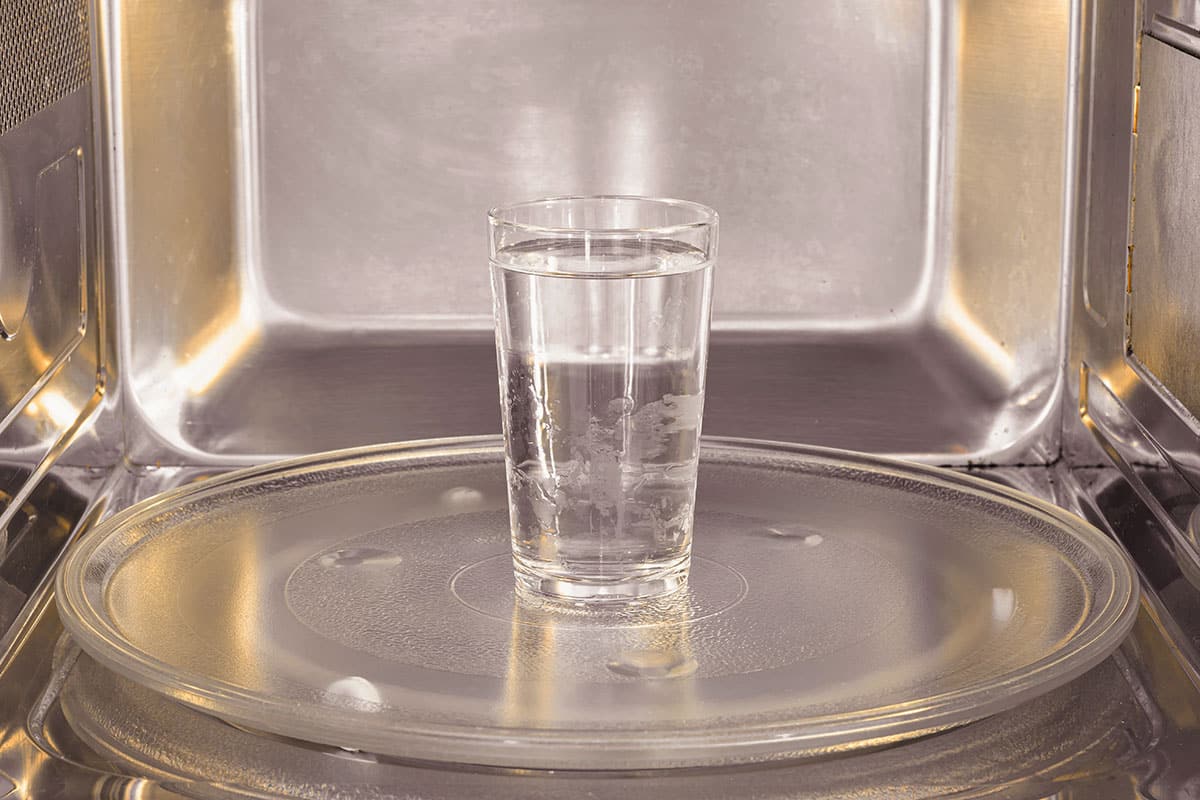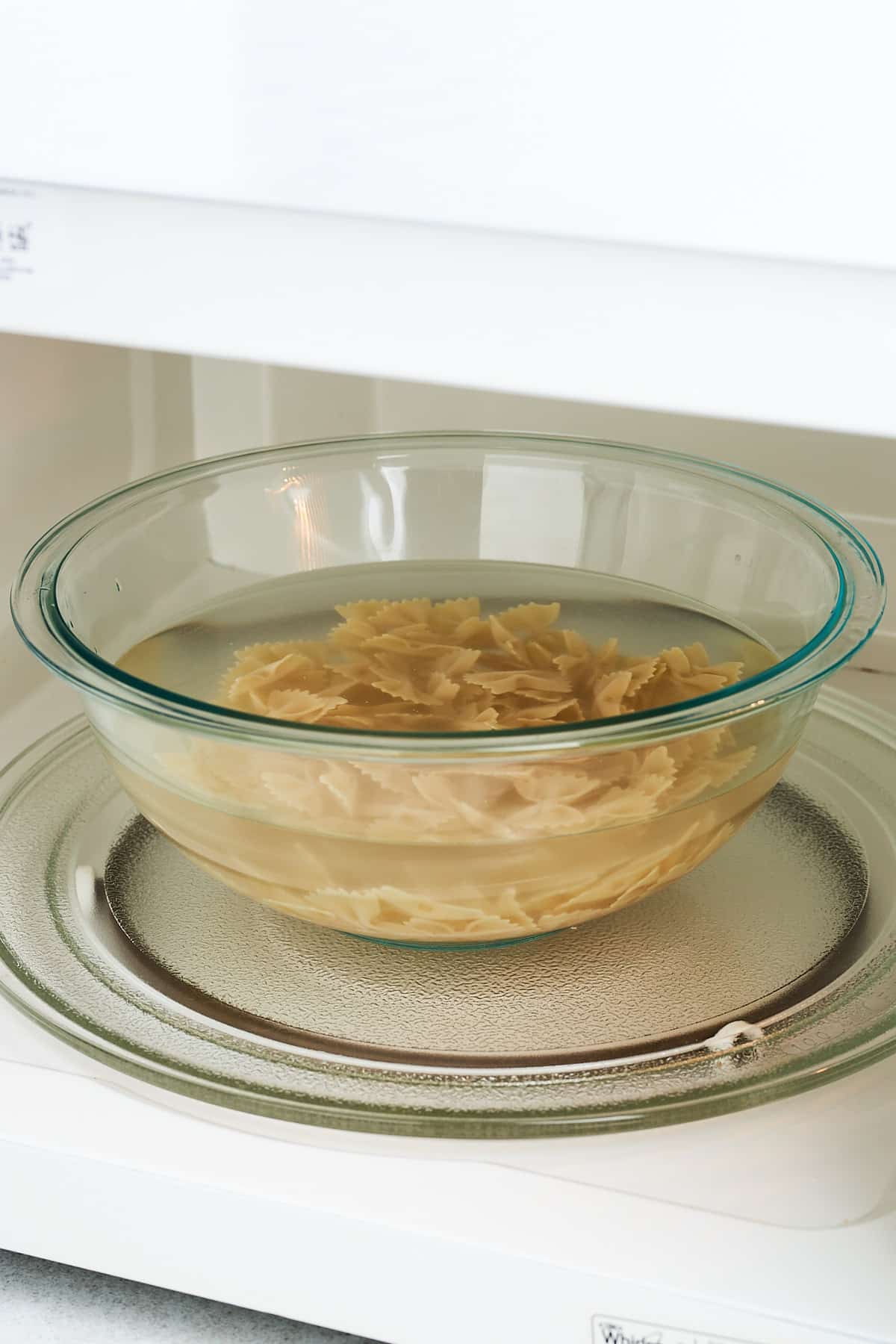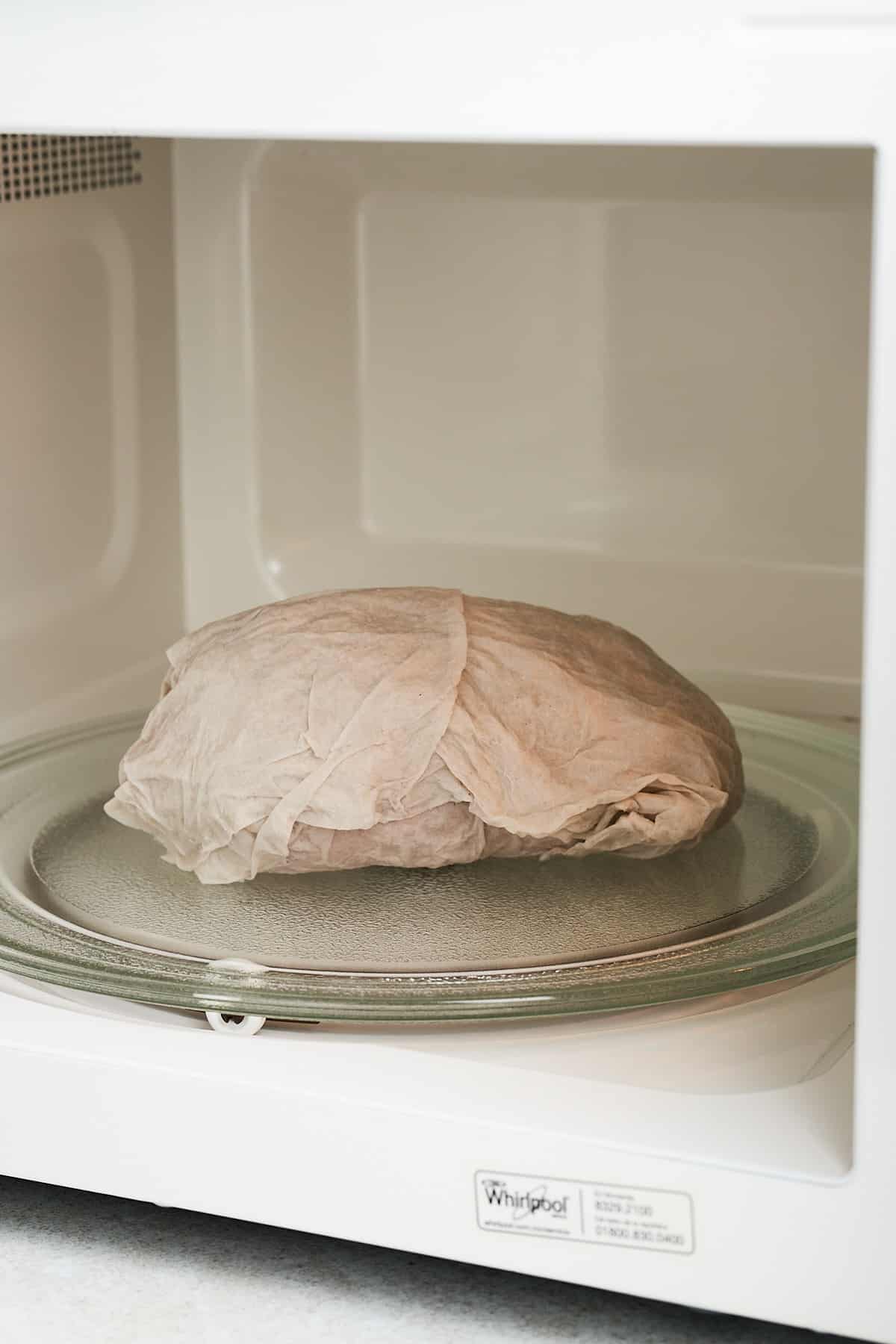
Need hot water quickly? You’ll need to know how long to boil water in the microwave, and we’ve got the exact answer for each different microwave based on watts and amount of water!

This may seem a simplistic question, but there are many reasons to know how long to set the microwave for when you need boiling water.
If you’re busy cooking, you don’t want to stand there and wait to see when your water boils. You also don’t want the microwave to keep running after the water has been boiling as it might overflow at a boil.
More importantly, if you keep boiling it, the water will turn to steam and make it more difficult and potentially dangerous to get it out of the microwave. The glass or cup can get too hot to handle, and super hot steam can come out of the microwave when you open the door. You want to set the time and forget about it while you get on with other kitchen tasks.
When the microwave beeps, you know it just boiled and is ready to go with no threats to you. So, let’s break it all down!
Water boils at 212 degrees Fahrenheit or 100 degrees Celsius. How quickly you can bring 1 cup to a boil depends on the power of your microwave.
Typical home microwaves range from 600 watts (w) to 1,200w. If you don’t know what the power of your microwave is, look inside the door, where it is probably listed. If not, you can easily Google the model number and find out. The low wattage microwaves in hotel rooms tend to be 600-700w, while your home microwave is likely 700-1000w or even 1,200w if it is a large model.
Here at Live Eat Learn we like to check things for ourselves vs trusting “the internet”. So with our 1000w microwave we watched water boil (Mom said a watched pot never boils, but it does). We then dialed down the power to check lower wattages. We used a small pyrex bowl with water straight out of the tap, just under room temperature water.
One 8 fluid ounce cup of water will typically boil in:
Two cups (16 fl ounces) of water will boil in:
Times can vary. At higher altitudes, water boils at a higher temperature due to the lower pressure, so it takes a little longer to boil water when you are higher up.

Here are a few important do’s and don’ts when it comes to boiling water in the microwave.
Consider placing a wooden object like a spoon or popsicle stick in the water. This ensures the water does not superheat beyond the boiling temperature of 212°F.
If you are boiling the water to sterilize it, ensure that it boils for at least 1 minute. This will ensure that microorganisms are killed.
Technically, you could. This might be tempting if you have a low watt microwave, but you shouldn’t for two reasons:

The microwave itself only gets to 130-140°F, but the energy imparted to foods within the microwave can cause the food to reach 212°F, which is the boiling temperature of water.
How a microwave cooks depends largely on the wattage used. A microwave oven cooking at 800w heats foods in a similar fashion to an oven at 450°F. The directions on most packaged food for microwave cooking is based on a 700w microwave, so if you are using a 1,200w appliance, you may want to use a lower cooking setting or shorter cooking time.
If you aren’t sure about an item, look at the bottom for the microwave safe symbol. It looks like a square with wavy lines coming out of it:

Conversely a warning to avoid microwave use might look like this:

Microwaving is pretty foolproof, but these materials should never go in your microwave.
Microwaves are themselves made of metal, but they are designed to reflect radio waves (in microwave length, hence the name). The microwave oven’s metal interior reflects these radio waves which transfer electromagnetic energy to whatever is in the microwave. When you put a metal item, like aluminum foil, in the microwave it too reflects microwaves. The foil heats up quickly and can actually catch fire. The word for this is….bad. Okay, it is actually combustion, but we kind of geeked out there for a minute.
The same physics as aluminum foil makes this dangerous. That metal spoon will start sparking and fly around the microwave.
Yes, popcorn comes in paper bags, but they are different. They are designed with a coating called a “susceptor” which absorbs the radio waves. Grocery bags, or that bag of leftover fries from Chick-Fil-A do not have this. Paper bags can catch fire in the microwave.
The problem with plastic bags and containers like yogurt cups, cottage cheese containers, etc, is that when microwaved they release Bisphenol A, also called BPA. BPAs are the compounds that make plastic clear. Microwaving the plastic will also release phthalate, a compound that makes the plastic flexible. When ingested BPAs and phthalates can act as mimics of human hormones and “cause problems” particularly for children.The FDA states that BPAs are safe in low doses, but what does that mean? As this is not a medical site, we would refer you to the Mayo Clinic’s position on BPAs.
Some plastic containers are safe to microwave, but check the bottom for the specific label of “microwave safe”. Typically those plastic containers with the #5 recycle symbol are microwave safe as they are made from Polypropylene.
Travel mugs are often made of metal or plastic. Do not put them in the microwave. Heat your water in a glass or ceramic mug and transfer it to your travel mug.
Styrofoam can melt in the microwave, so don’t heat anything on styrofoam plates or the styrofoam container your leftovers came in at the fast food restaurant. There have, however, been some styrofoam containers produced lately that are microwave safe. Just be sure to check that it specifically says microwave safe before using it.
Don’t be tempted to reheat hard-boiled eggs. The reason is the same as not putting a sealed container in the microwave. Pressure will build up within the shell and bam you have egg splatter all over the inside of your microwave. For the physics nerds this is a matter of the principle PV=T which means Pressure x Volume = Temperature. As the temperature inside the egg rises the pressure goes up, but because the egg shell stays at a constant volume (for a while). When the pressure gets too great…..the egg comes apart in dramatic fashion.
What, hot peppers? Why not? Think about water boiling. The steam results when the water turns to gas. Now imagine a pepper getting really hot and parts of it turning to gas because peppers are about 92% water. Well when you open the microwave those Ghost Peppers are now like a pepper spray coming out of your microwave. This may sound overly dramatic, but pepper spray is only about 2-3 times stronger than ghost peppers, Carolina reapers, pepper X, or the other super hot pepper varieties.
If you want to reheat your beef and broccoli, you CAN use the container you got from the Chinese restaurant, but be sure to remove the metal carrying handle if there is one.
Running an empty microwave can damage the oven as the microwaves bounce around the oven with nothing to heat.

By way of synopsizing this, lets take a look at a few FAQs!
Can you put a Yeti in the microwave? Absolutely not. There is too much metal in a Yeti which can combust in the microwave.
Can you put pyrex in the microwave? Yes. Pyrex is made from Borosilicate glass which is very heat resistant making Pyrex cookware ideal for the microwave.
Can you put a Ziploc bag in the microwave? Yes. Ziploc bags are U.S. Food and Drug Administration (FDA) approved for the microwave, so you can freeze leftovers in your Ziplocs and thaw them in the microwave.
Can you put glass in the microwave? Yes, but look for the “microwave safe” label.
Can you microwave parchment paper? Yes. This is a good option for microwave cooking.
Can you put cardboard in the microwave? We recommend that you start with the assumption of NO unless you are using a cardboard container with the microwave safe symbol on the bottom. The problem is cardboard can contain glues, waxes and other materials that can make it a safety hazard in the microwave.
Can you put paper plates in the microwave? Most paper plates are fine in the microwave. The manufacturers know you want to use them this way. If your plates you are buying have a coating, just check the label on the package before you buy them and look for the microwave safe label.
Can you microwave solo cups? No. Solo cups are made mosty of polystyrene which is microwave safe, but they also contain a small amount of clay which is a problem in the microwave. This can cause the cups to melt and release some of that clay into your food or drink.
Can you microwave Tupperware? Yes, as long as it is labeled as microwave-safe, and is made with plastic #5 (polypropylene) as reflected in the #5 recycle symbol.
Is Ceramic microwave safe? Yes, the majority of ceramic plates and bowls are microwavable. You might want to check the bottom for a contradictory symbol just to be sure. If, however, the dishware has a metallic finish or painted trim, do not put it in the microwave.
Can you microwave mason jars? Yes, but glass jars can get quite hot. You are best to not fill it to the top with foods that require lengthy cooking as the glass can get very hot.
What about running an empty microwave? Nope, don’t do it. Running your microwave while empty can damage the oven.

My Cookbook Is Now Available!
Over 100 reader-favorite easy vegetarian recipes that help you get fuss-free, nutritious meals on the table.